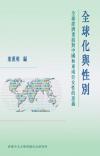
Yip, Hon Ming 葉漢明, ed.
Hong Kong: The Chinese University of Hong Kong 香港中文大學香港亞太研究所, 2011
Reviewed by Tuen Yi Chiu (Ph.D. candidate, Department of Sociology, The Chinese University of Hong Kong)
This edited volume, published in 2011, is a collection of nineteen essays by participants in the international conference on Globalization and Gender, co-organized by The Gender Research Centre, Hong Kong Institute of Asia-Pacific Studies, The Chinese University of Hong Kong and the Women’s Studies Centre of Peking University in 2003. Centering on the issue of globalization and economic restructuring in China and in Southeast Asian countries, this book is one of the few books written in Chinese that discusses the impact of global economic restructuring on female labor in Asian developing countries. Although the chapters deal with the late 1990s and early 2000s, this book serves as a lens to understand how globalization influenced the situation of women in China and Southeast Asia in terms of education, labor force participation, paid and unpaid domestic labor, social and geographical mobility, and health. It reveals the complexity and diversity of female experiences and illuminates how gender intersects with class, ethnicity, and age to affect the lives of women. It also reveals the paradoxical and complex impact of globalization by examining both the exploitation and agency of women in East and Southeast Asia. Overall, the book provides a platform for scholars and policy makers to exchange ideas on how globalization impacts men and women differently. Rather than closing the debate, the book invites further discussion.
While the book focuses on the implications of global economic restructuring for women in China and Southeast Asia, except for the first chapter that discusses broad, overall patterns of feminization of labor migration, the remaining chapters focus on either the case of China or the case of Southeast Asia, including the Philippines and Indonesia. What is missing is a more systematic comparison of how global economic restructuring might affect female labor in China and Southeast Asia similarly or differently. By doing so, we would see how women in different regions within Asia might react to and interact with the influence of globalization. It would also seem promising to discuss further how global economic restructuring affects the geographic economic hierarchy and regional politics by comparing more developed areas (like Hong Kong and Taiwan), less developed countries (like China), and developing countries (like the Philippines and Indonesia).
Second, the book also warrants further analysis of the voices of mid-level actors, i.e. the employers hiring female workers. Further investigation on how hiring strategies are shaped by global demand and how they in turn shape the employability of women at different ages with different levels of human capital would help us better understand how the macro (globalization) affects the micro (women in developing countries) through mid-level actors.
Finally at the policy level, an overall framework tackling gender inequalities in the labor market would benefit readers by pointing out how various actors, including the state and the private sector, could empower women in the global economic restructuring process. While globalization is largely conceptualized as a given that influences people’s lives and livelihoods, we should also think of globalization as a dependent variable shaped by other factors – some of which might be under the control of policy makers. By doing so, we would arrive at a more thorough understanding of how globalization evolves and operates in different parts of the world.
